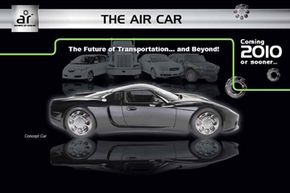Hey, kids! Today's vocabulary word is vaporware! This means that a company has created a lot of hoopla about a product, but then the company never releases or even cancels that product. It just evaporates.
So, can you use today's vocabulary word in a sentence? How about this one: The magnetic air car that was promised in 2008 and expected in 2010 never materialized -- meaning that by 2012, this technology was vaporware.
Advertisement
According to press reports, Magnetic Air Motors of San Jose, Calif., was creating a fuel-less car that used compressed air and magnets to power the vehicle. The company was careful to point out that their idea was different from Tata Motor's air car prototype, which used pistons. The Magnetic Air Car lived up to its name. It wasn't called the Piston-Pumping Air Car, after all.
Its name was all it lived up to, however. Even the images that circulated with the press releases were of the GTM Supercar available from kit car manufacturer Factory Five -- a car that's truly available at a price of about $20,000 [source: Factory Five].
But the Magnetic Air Motors car wasn't even entirely the first of its kind. In 1932, a man named J.M. Custer built a prototype vehicle which ran on compressed air. Of course, the people behind the modern Magnetic Air Car knew this, and even based their patent on Custer's prior technology.
But here's the funny thing about vaporware: It's almost like Freddy Kruger and his claws or Jason and his machete; it can always come back when the time is right. Let's take a quick look at the technology behind the Magnetic Air Car so we'll know it when (if) we see it in the future.
Advertisement


